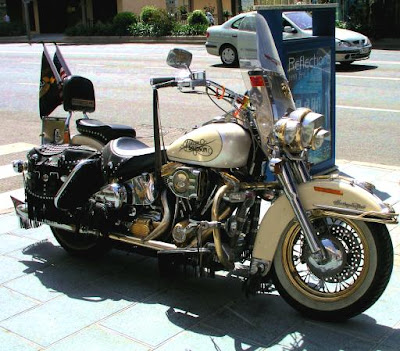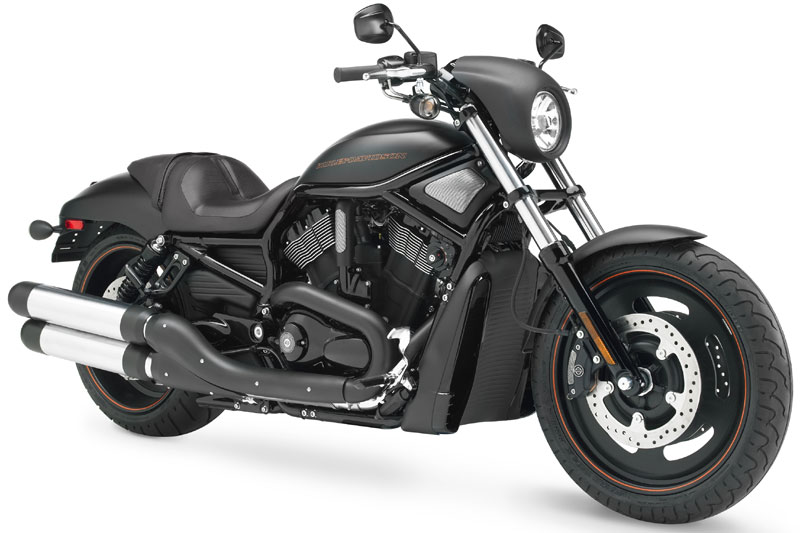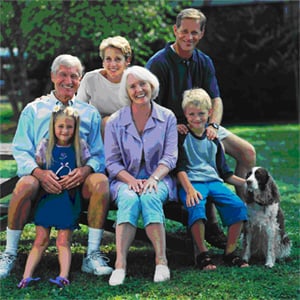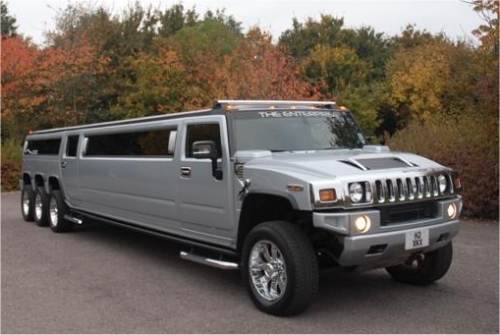 OVERVIEW
OVERVIEWIn December 1996 General Motors Corporation (GM) became the first major automaker in almost 80 years to market an electric car, dubbed the EV1. The car’s debut came just months after the California Air Resources Board had reluctantly decided to postpone a mandate requiring that 2 percent of cars sold in the state by 1998 be powered by electricity. Regulators agreed to change the mandate to 10 percent by 2003, but only if automakers began voluntarily introducing electric cars. With the EV1, GM effectively shifted the discussion about electric cars from the fringe to the mainstream. By most accounts, the car was a technological marvel. Its sporty aerodynamic design, which included an allaluminum frame, magnesium seats, and low-resistance tires, earned GM engineers 23 patents. But while the introduction of the EV1 was undeniably a watershed event, there were obstacles to the car’s success. It could travel just 80 to 90 miles before needing to be recharged, which took about three hours. The price was high, with lease payments coming to about $480 a month after various federal, state, and local tax incentives. And since there were only a handful of public charging sites, drivers would need to lease a charging unit for their garages or workplaces for another $50 a month.
Thanks to a steady stream of media coverage, there was pent-up curiosity about the EV1 when it became available on December 5, 1996. The $10 million advertising campaign developed by Hal Riney & Partners of San Francisco added to the mystique of the EV1. The campaign did not delve into the intricacies of the car’s technology but instead was aimed at building awareness and excitement about the fact that an electric car was available and that GM was behind it. While the target market for the EV1 was expected to be affluent people with an interest in technology and the environment, the early stage of the campaign was aimed at reaching a broader, more general audience. Teaser billboards and newspaper ads inaugurated the campaign, which was kicked off in full force on December 5, 1996, with the broadcast of a $1.5 million television commercial that featured an endearingly lifelike brigade of home appliances.
HISTORICAL CONTEXTDuring the 1990s California earned the dubious distinction of having the dirtiest air in the nation. Car and truck exhaust could be blamed for at least half of the state’s air pollution, which spurred regulators to create a mandate for electric-powered vehicles. Similar clean-air mandates were in the works in other states, such as New York and Massachusetts that were also alarmed by worsening air quality. The laws that were passed varied, but in general they required automakers to begin offering vehicles that met the ultra-low-emissions-vehicle (ULEV) standard or the zero-emissions-vehicle (ZEV) standard. The mandates were controversial. The principal question was whether states should mandate production of the cars and hope that consumers and ample public charging stations followed or if consumer demand should determine how many electric cars automakers built. GM’s research suggested that consumers were receptive to electric cars, even if it meant sacrificing some of the conveniences they enjoyed with gas-powered automobiles. The lack of a public infrastructure was worrisome but not insurmountable to GM. In southern California, for example, utility companies had already begun installing charging sites in locations such as shopping centers, restaurants, hospitals, theaters, and public parking structures. By being the first to bring a car to market, GM would be able to stake a claim to technological leadership going into the next century.
Many in the industry believed that the EV1 and other electric cars could legitimize a new approach to transportation that would dramatically lessen air pollution. John Dunlap III, the chairman of the California Air Resources Board, was enthusiastic about the EV1: ‘‘This has the potential of being a revolutionary step.’’ Others, however, worried that if the EV1 failed it could set back development of alternative-fuel vehicles for years to come.
TARGET MARKETNot surprisingly, GM selected California as a launch state for the EV1. Arizona, the other launch state, also made sense, for its warm climate allowed for optimal performance of the car’s battery. A key marketing decision was made that, while the car would carry the GM badge, it would be leased through the Saturn Corporation subsidiary. The two-seater EV1 seemed to be a good fit with Saturn’s young, environmentally conscious buyers. Moreover, by offering the EV1 at Saturn dealerships, where 73 percent of sales were to people whose second choice was not a GM vehicle, GM saw an opportunity to reach import-loyal customers. Oddly enough, marketing the EV1 was as much about determining who should not drive it as who should. GM was quick to point out that the EV1 was not right for everyone. Joseph Kennedy, the Saturn vice president for marketing, told Popular Science, ‘‘Because the EV1 is a two-seat vehicle and does not have the longdistance range [of] 200 miles or 300 miles, it will play a role in the owner’s portfolio of vehicles.’’ He explained that the EV1 was not a primary household vehicle that could fulfill all driving needs but one appropriate for ‘‘shorter, quicker uses around town.’’
The groundwork for introducing the EV1 was laid in 1994, when GM’s PrEview Drive Program gave people in 12 cities the chance to drive a prototype model for two weeks. ‘‘We saw that it wasn’t going to be an ordinary buyer,’’ Necole Merritt, manager of corporate communications for Saturn, observed. ‘‘It was someone attuned to innovation, the kind of person who bought the first cell phone or first computer.’’ The PrEview Drive Program and other research suggested that potential drivers would be affluent college graduates, usually white, middle-aged men who were leaders in their fields. They were expected to be 35 to 54 years old, with an annual family income of more than $125,000 and a high interest in technology and the environment. Frank Pereira, GM’s EV1 brand manager, noted that the car ‘‘really speaks to those who have a desire to be in the forefront of directing the evolution of technology.’’ Once the vehicle was in the Saturn retail facilities, sales consultants narrowed the target market even further. Each facility had a consultant trained in EV1 technology who screened customers to be sure that an electric vehicle was appropriate for their needs. Next, would-be customers made an appointment with an electric vehicle marketing specialist who spent up to 12 hours making certain that their driving habits and expectations were a good fit with the EV1. ‘‘It’s important they convey to customers what this car can and cannot do,’’ explained Donald Young, Saturn’s representative for the EV1 program. ‘‘We don’t want to sell it to someone who drives 60 miles to work each way.’’ The specialists also coordinated a home and garage inspection to determine how to install the EV1’s charging unit.
COMPETITIONIn 1996 a reporter for the Los Angeles Times wrote that, ‘‘while other major auto makers have held their electric vehicle cards close to the vest, GM has been center stage.’’ Every major automaker, however, was under the same clean-air mandate, and they all kept watchful eyes on the public’s reaction to the EV1. What they observed was a market, albeit a small one, emerging. Other automakers followed on GM’s heels. Toyota produced an electric version of its RAV4sport utility vehicle, but for government or company fleet leasing only. In 1997 Ford produced an electric vehicle for fleet use. Ford, however, seemed to be taking a different approach from GM, with its efforts directed at creating alternative-fuel vehicles that would meet ULEV standards. Consumers’ Research Magazine reported that Ford offered the best range of ‘‘street-worthy’’ alternative-fuel vehicles, including the electric Ranger pickup truck, a Taurus sedan that ran on methanol and ethanol, and several other sedans that ran on compressed natural gas. In May 1997 Honda presented the most formidable challenge to GM’s electric car yet when it introduced its EV Plus, which boasted a longer-life nickel-metal hybrid battery and a greater driving range. Advertising for the EV1, however, did not address any of the emerging competitors. For the time being there was plenty of room for all electric carmakers on the playing field.
MARKETING STRATEGYTo build public awareness of the EV1’s introduction, GM hired Hal Riney & Partners, the same marketing and communications partner that had created Saturn’s award-winning advertising. Teaser billboards in Los Angeles and San Diego were the first element of the campaign to be unveiled. The billboards displayed a lightning bolt and the words ‘‘You can’t hear it coming, but it is.’’ The day the cars went on sale, new billboard ads went up with a photograph of the EV1 and the words ‘‘The electric car is here.’’
The campaign’s centerpiece was a 90-second television commercial that showed animated household appliances greeting the battery-powered EV1. Its eyecatching special effects were created by Industrial Light and Magic, a studio started by Star Wars creator George Lucas. The commercial began with a thunderstorm that knocked the electricity out in a home. When the power came back on, the appliances sprang to life. They unplugged themselves and waddled out the door to watch as the EV1 approached on the street. ‘‘It’s intended as a celebration of the arrival of the electric vehicle,’’ explained Saturn’s Kennedy. Both 30- and 60-second versions of the commercial also aired for 12 weeks in late 1996 and early 1997.
Newspaper ads during the introductory campaign tried to show consumers what a dramatic departure the EV1 was from gasoline-powered cars. For instance, a two-page ad in the Los Angeles Times depicted reeds blowing in the wind as the car drove by. It read, ‘‘There is no noise. No pistons. No valves or exhaust. Just the whir of an AC motor. And the wind. And your thoughts, of course. As you drive the electric car.’’ Because the automobile was available only in limited markets, the heaviest concentration of newspaper advertising was regional. Newspapers ads appeared in the California edition of the Wall Street Journal and in the Los Angeles Times, Arizona Republic, and Phoenix Gazette. Magazine advertising during the introductory period was placed to reach leaders in technology and innovation. The media plan included such periodicals as Business Week, Inc., Scientific American, Wired, and American Benefactor. Magazine ads had the same thoughtful, laid-back approach as the newspaper ads. One ad, for instance, showed the blur of the car on a stretch of highway and read, ‘‘You will never again use the words ‘fill’er up.’ Or ‘check the oil.’ Never utter the need for a tune-up. Or a smog check. Nope. You will simply say, ‘Unplug the car and let’s go.’ When you drive the electric car.’’ Following the 12-week introductory campaign, the marketing efforts for the EV1 shifted into a lower gear. The remainder of the advertising budget went primarily into direct-mail pieces and a handful of ads in magazines favored by technology buffs.
Time magazine’s Margot Hornblower criticized the marketing approach used for the EV1. Describing a billboard that showed a single headlight in the darkness and the words ‘‘Electrohydraulic power steering, digital clock, EV1,’’ Hornblower wrote, ‘‘The low-key print campaign has been so esoteric as to be nearly incomprehensible.’’ This subtle approach also was frustrating to members of the EV1 Owners Club, who felt that the car’s features should be spelled out more clearly in order to lure potential drivers. In fact, Marvin Rush, cofounder of the club, purchased airtime on KFI in Los Angeles with his own money and ran unauthorized spots for four weeks in early 1998. Rush told the Los Angeles Times that EV1 owners ‘‘consider ourselves evangelists. We’re trying to get GM to change its advertising.’’ In the end GM’s lawyers reviewed the radio ads for misstatements, found none, and opted to let the renegade campaign run its course. ‘‘They’re actually pretty good,’’ EV1 brand manager Frank Periera confessed to the Los Angeles Times.
OUTCOMEThe EV1 advertising campaign received critical kudos. Bob Garfield, a reviewer for Advertising Age, wrote that the television commercial used ‘‘eye-popping digital effects to communicate the revolutionary significance, the drama and the exciting implications of this introduction.’’ He added, ‘‘The march of the electronivores! It’s a wonderful concept, wonderfully realized. Even the unplugged among us will not be able not to stare at the futuristic vehicle Californians and Arizonans can buy right now.’’ A print ad for the EV1 took home the prized $100,000 cash Kelly Award for best magazine advertising as well as nonmonetary Kelly Awards for meeting the campaign’s objective and for design and graphics.
While the EV1 got rave reviews for its advertising, the car itself had no shortage of critics. Automotive analyst Christopher Cedergen told CBS News, ‘‘Overall, the electric car concept is premature. The technology really isn’t there yet.’’ Richard de Neufville, professor of transportation at the Massachusetts Institute of Technology, was quoted in Time magazine as saying, ‘‘They gave a party, and nobody came.’’ GM declined to make sales projections when the EV1 rolled out, but industry sources speculated that fewer than 2,000 would be leased in the first year. That figure proved to be optimistic, for only 300 EV1s were actually leased. Some speculated that the advertising had missed the mark by failing to link the EV1 with Saturn dealerships. Joe Ricciardi, who led GM’s EV1 effort in Arizona, acknowledged in the Arizona Republic that ‘‘there are a lot of people who don’t know it [the electric car] is out there and don’t know where to find it.’’ To some the EV1 was most remarkable in its role as a stepping-stone to other clean-air transportation solutions.
Phil Hodgetts, president of the Electric Vehicles
Association of Southern California, said in the Los Angeles Times, ‘‘The biggest advantage of the EV1 has been to excite public interest in cars that will be nonpolluting, in pure electric vehicles running on batteries. I think it’s the start of something big.’’ GM executives contended all along that the goal of the EV1 was to build a market for alternative-fuel vehicles and that sales volume was less important than giving early drivers a good experience. Despite tepid leasing numbers in 1997, GM’s commitment to the EV1 remained firm going into 1998. The car was introduced in the metropolitan areas of San Francisco and Sacramento, the advertising budget was increased from $10 million to $15 million, and GM stepped up efforts to create an infrastructure by committing $750,000 for the development of public charging sites in the car’s markets.
While the basic approach remained the same, advertising leading into 1998 introduced a welcome touch of humor to the sometimes awestruck tone of the 1997 campaign. A few print ads even cleverly capitalized on the public’s dubiousness. An ad that ran in newspapers in northern California, for example, showed an overhead view of the EV1 and stated, ‘‘All the skepticism in the world can’t stop it. The electric car is here.’’





















